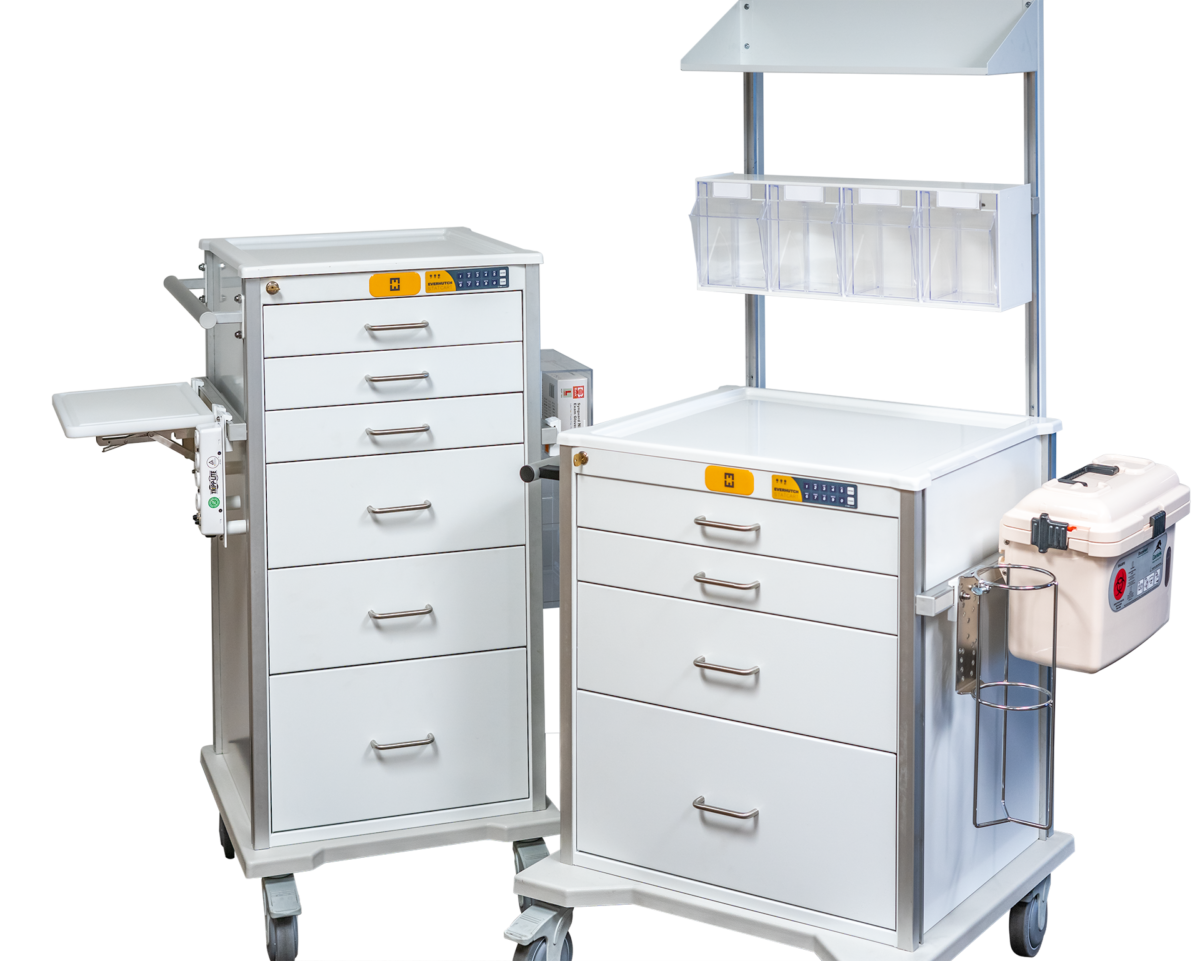The modern healthcare industry is full of innovative new approaches and technologies that have vastly improved medical outcomes in a variety of situations. Amidst all the advanced techniques and apparatus, the medical cart may seem a minor part of a complex whole. Nevertheless, it is a vital piece of equipment that should be fitted with all the most modern features if it is to be as effective as possible in a variety of healthcare settings and situations.
Medical carts in general
In general terms, a medical cart is a mobile storage device. They have been around for a while, but in recent years advances in technology and improved design have turned them into an essential part of many healthcare settings. That includes doctors’ offices, hospitals, residential care facilities, dental surgeries, biomedical laboratories and anywhere else where medicine is practiced.
The way in which the carts are used depends on the specific setting and purpose, but they usually offer a mix of shelves, drawers and containers that can store different items of medical equipment. For dangerous objects such as drugs and sharps, this will need to include security features. Infection control features are also likely to be prominent, with surfaces that are smooth and easy to clean. There may also be flat working spaces for writing and disposal facilities for used items..
An important feature of the medical cart is that it comes with wheels. This means it can easily be moved from one location to another. With adjustable drawers/shelving and other adjustable features, carts can be adapted to the needs of specific departments or for specific purposes.
Specialist carts
You may find a medical cart in the emergency room, in radiology, in anesthesiology, in cardiology, in an isolation ward, in pediatrics or practically any other specialty, as well as in a more generalist MDs practice. This can lead to design variations between them. In areas where patients are at high risk of heart failure or respiratory failure, an emergency crash cart can include space for a defibrillator, intubation kit, IV pole and other lifesaving essentials. Other specialist carts include anesthesia carts and isolation carts.
Anesthesia carts include needles, tubes, oxygen masks and similar so an anesthesiologist can adequately sedate and monitor a patient during a procedure. Isolation carts for working in areas with infectious diseases include increased levels of personal protective equipment such as gloves, masks, face shields and gowns. Meanwhile, the regular procedure cart has all the basic equipment needed for everyday medicine.
There are as many uses for the modern medical cart as there are branches of medicine. They are designed to be flexible, with changing configurations of equipment in different combinations of drawers and shelves so that they can be adjusted to any situation. They can contain the items that practitioners need, such as personal protective equipment, and the items that patients need, from drugs to defibrillators. If you need to be able to store medical items securely and transport them easily, then a medical cart is the solution.

Comments are closed.